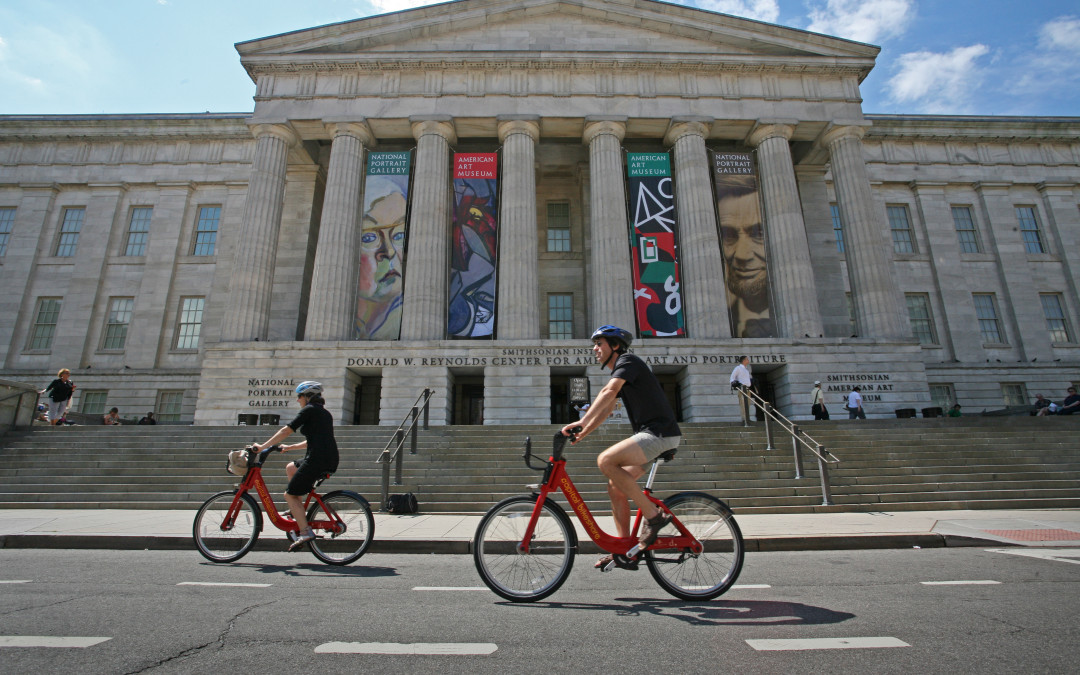
by mattchristensen00 | Apr 17, 2015 |
Over the last year, Agrion, Perkins + Will, and UC Berkeley’s Transportation Sustainability Research Center have led a series of workshops regarding a range of urban mobility issues. Each of these workshops have been summarized and provided in PDF form below. 1. Evolving Urban Mobility: A New Regulatory Environment (March 27, 2014) 2. Urban Mobility Workshop: Public-Private Collaboration and Data Sharing (June 19, 2014) 3. Public/Private Urban Mobility Data Sharing: Evaluating Security and Privacy Solutions (November 13, 2014) 4. Crossing the Digital and Income Divide: Making Mobility Innovations Accessible to All (February 18,...

by mattchristensen00 | Mar 17, 2015 |
By Susan Shaheen, PhD, and Nelson Chan Shared-use mobility includes carsharing, personal vehicle sharing (or peer-to-peer (P2P) carsharing), bikesharing, scooter sharing, shuttle services, ridesharing, and on-demand ride services. It can also include commercial delivery vehicles providing flexible goods movement. Shared-use mobility has had a transformative impact on many global cities by enhancing transportation accessibility while simultaneously reducing ownership of personal automobiles. In the context of carsharing and bikesharing, vehicles and bicycles are typically unattended, concentrated in a network of locations where the transaction of checking out a vehicle or bicycles is facilitated through information technology (IT) and other technological innovations. Usually, carsharing and bikesharing operators are responsible for the cost of maintenance, storage, parking, and insurance/fuel (if applicable). In the context of classic ridesharing (carpooling and vanpooling) and on-demand ride services, such as transportation network companies (TNCs), many of these providers employ IT to facilitate the matching of riders and drivers for trip making. To download the full report, click here....

by mattchristensen00 | Mar 2, 2015 |
Traffic sucks. Even the Department of Transportation thinks so. Someday in the not too distant future–think somewhere between Uber picking you up when you’re drunk and the arrival of super fast self-driving cars–your commute might be very different. Last week, IT company Cisco announced they’re selling a new suite of technologies that could improve traffic and car safety. One of the major components of their technology is increased vehicle-to-vehicle (V2V) communication. “Think of it as vehicles that are talking to each other,” says Susan Shaheen, a transportation engineer at the University of California, Berkeley, who was not involved in Cisco’s project. Vehicles equipped with V2V technology can exchange information with similarly equipped cars, including their speed and location, hopefully making traffic move more smoothly, and preventing accidents caused by human error. Cisco’s group of technologies (including cameras, routers, and transmission devices) provide a way to integrate the V2V technologies that auto companies like GM are working on, to help them connect to each other and eventually to city infrastructure. But what does it mean for you? Let’s take a look at a day in the life of your future self…or at least the parts you’ll spend in your car. To read the full article, click...

by mattchristensen00 | Feb 20, 2015 |
This workshop was sponsored by the Emerging and Innovative Public Transport and Technologies Committee (AP020); Shared-Use Mobility and Public Transit Subcommittee (AP020(1)); Emerging Ridesharing Solutions Joint Subcommittee (AP020(2)); Automated Transit Systems (AP040) Committee of the Transportation Research Board of the National Academies — Prepared by Susan Shaheen, PhD and Matthew Christensen, Transportation Sustainability Research Center, University of California, Berkeley On Sunday, January 11, 2015, Professor Susan Shaheen from the University of California, Berkeley and Jeffrey Chernick from RideAmigos led a one-day workshop on the present and future of shared-use mobility at the Transportation Research Board annual meeting in Washington, DC. The workshop featured speakers representing the various shared-use modes, other private sector representatives, and public sector officials, and many topics were discussed. Some of the highlights included: the role of integrated mobile payment; the need to integrate shared ride services with paratransit to increase its benefits; and autonomous vehicle technologies in the future of shared-use mobility. Public-private partnerships are critical to the future of transportation, and collaboration among different groups will be key to the development of effective mobility systems. In the opening session, Highlights from the Innovation in Mobility Public Policy Summit (IMPPS), Jason Pavluchuk from Pavluchuk & Associates recapped the key points from the IMPPS that was held in June 2014 in Washington, DC. More than 250 people attended the summit, which focused primarily on federal and local policy, and industry innovation. It was noted that while innovation moves more quickly than policy, some cities are beginning to develop frameworks to better manage innovation. On a national scale, Pavluchuk described that federal policy and capital programs have not...

by Jaelen Loche | Feb 4, 2015 |
By Laurent Barelier Integrating shared-use mobilities with government-owned public transit services is regarded as a notable opportunity and challenge in urban transportation. Such integration will help in solving the first-and-last mile problem, creating a valuable synergy between public transportation and shared-use mobility services. Shared-used mobilities often complement and sometimes compete with public transportation. Bikesharing systems, for example,provide opportunities to complete first-and-last mile connections to public transit networks. That was not possible before. It is a complex situation: shifts away from public transit are most prominent in core urban environments with high population density and transit vehicles often over-crowded at peak periods. Shifts toward public transit in response to bikesharing appear most prevalent in lower density regions on the urban periphery and in less dense regions…* To read the full article, click...






